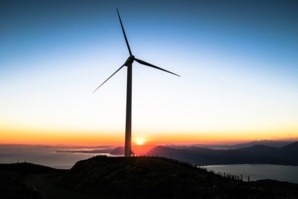According to a study, the U.S. Midwest seems to be the best place for investing in “wind turbines and solar panels” as compared to rest of the country for the installation in the said region promises to “deliver the biggest cuts in climate-warming emissions and improvements in public health”.
The above mentioned study was conducted by researchers from the “Harvard T.H. Chan School of Public Health and Carnegie Mellon University”, which states that the benefit of investing in renewable energy will partially be proportionate to the displacement of “coal-fired power plants or cleaner-burning fuels like natural gas”. Moreover, one needs to also take into account the population size as well as their “proximity to power plants” which will eventually translate into cost benefits for spreading clean energy which will reflect as the impact on public health for “removing pollution from the air”.
Furthermore, the study also revealed that “a megawatt hour (Mwh) of wind-powered electricity installed in the Upper Midwest achieves about $113 worth of benefits” while in California its “$28 per Mwh” and the latter has a wide range of “renewables and gas”, while solar and other renewable sources also showed similar values.
In the words of the author of the study, Jonathan Buonocore:
“There’s a lot of coal there and there’s a lot of people who live in the region and downwind of the region”.
While, Buonocore noted that some pollution from Midwest gets carried to the people living on the East Coast region. Under the said study the U.S. was divided into ten regions, while the largest benefits from renewable energy installation showed in “the Upper Midwest, Great Lakes and Lower Midwest”, while at the other end of the list with the lowest benefits were “California, the Southwest and the Rocky Mountains”. Furthermore, Reuters also reported:
“Both the social cost of carbon - a measurement of the economic harm caused by carbon dioxide through its climate and other impacts - and lower mortality rates were factored into the cost benefit analyses, the study said”.
However, the study didn’t take into account the “impact of fugitive methane emissions from the natural gas supply chain”, reflected Buonocore, as methane is a “more potent” green house gas than CO2. When it comes to the technologies of carbon capture and sequestration of coal plants versus installation of renewable energy plants to but down carbon emissions, both seemed comparable in terms of cost, although the former yielded less “health benefits in most regions”.
References:
reuters.com
The above mentioned study was conducted by researchers from the “Harvard T.H. Chan School of Public Health and Carnegie Mellon University”, which states that the benefit of investing in renewable energy will partially be proportionate to the displacement of “coal-fired power plants or cleaner-burning fuels like natural gas”. Moreover, one needs to also take into account the population size as well as their “proximity to power plants” which will eventually translate into cost benefits for spreading clean energy which will reflect as the impact on public health for “removing pollution from the air”.
Furthermore, the study also revealed that “a megawatt hour (Mwh) of wind-powered electricity installed in the Upper Midwest achieves about $113 worth of benefits” while in California its “$28 per Mwh” and the latter has a wide range of “renewables and gas”, while solar and other renewable sources also showed similar values.
In the words of the author of the study, Jonathan Buonocore:
“There’s a lot of coal there and there’s a lot of people who live in the region and downwind of the region”.
While, Buonocore noted that some pollution from Midwest gets carried to the people living on the East Coast region. Under the said study the U.S. was divided into ten regions, while the largest benefits from renewable energy installation showed in “the Upper Midwest, Great Lakes and Lower Midwest”, while at the other end of the list with the lowest benefits were “California, the Southwest and the Rocky Mountains”. Furthermore, Reuters also reported:
“Both the social cost of carbon - a measurement of the economic harm caused by carbon dioxide through its climate and other impacts - and lower mortality rates were factored into the cost benefit analyses, the study said”.
However, the study didn’t take into account the “impact of fugitive methane emissions from the natural gas supply chain”, reflected Buonocore, as methane is a “more potent” green house gas than CO2. When it comes to the technologies of carbon capture and sequestration of coal plants versus installation of renewable energy plants to but down carbon emissions, both seemed comparable in terms of cost, although the former yielded less “health benefits in most regions”.
References:
reuters.com






